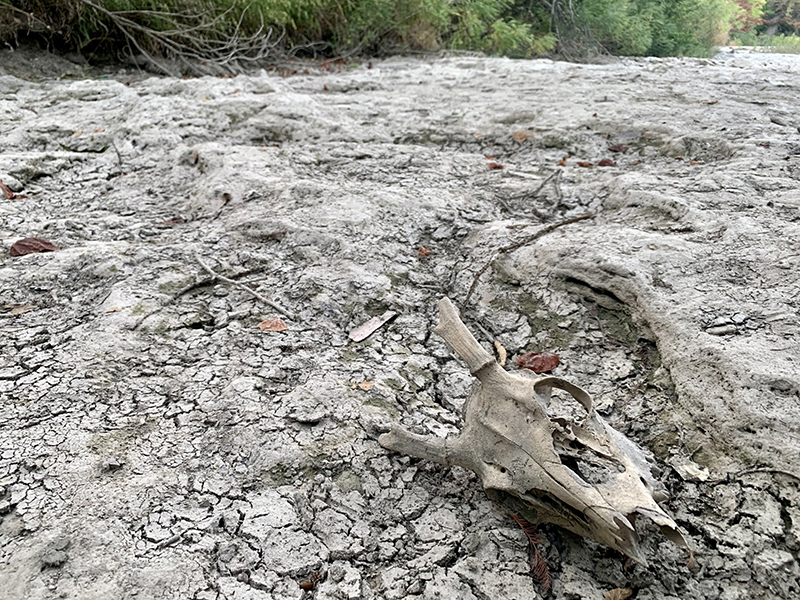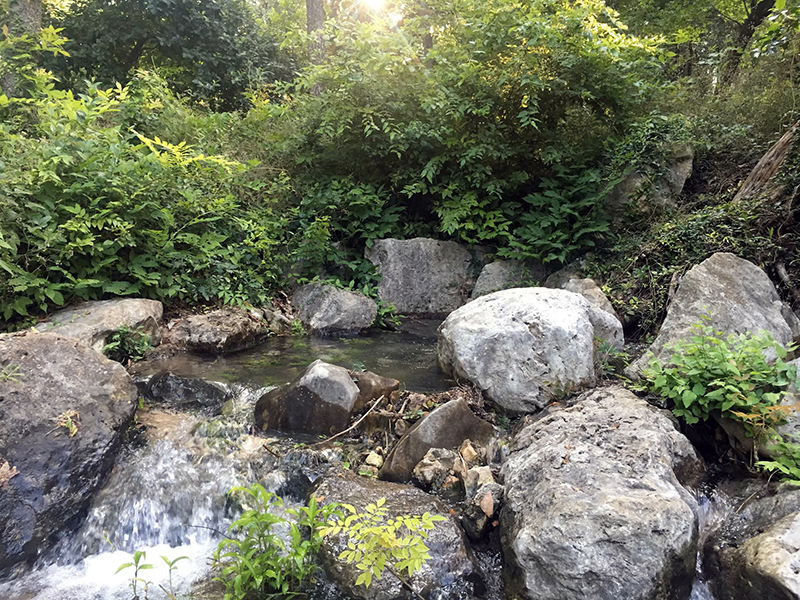Paul Babb chronicles his life by rivers. Born just south of the Red River, Babb recalls touchstone encounters with the Red before his family moved to the Brazos and later to the Sabine in East Texas.
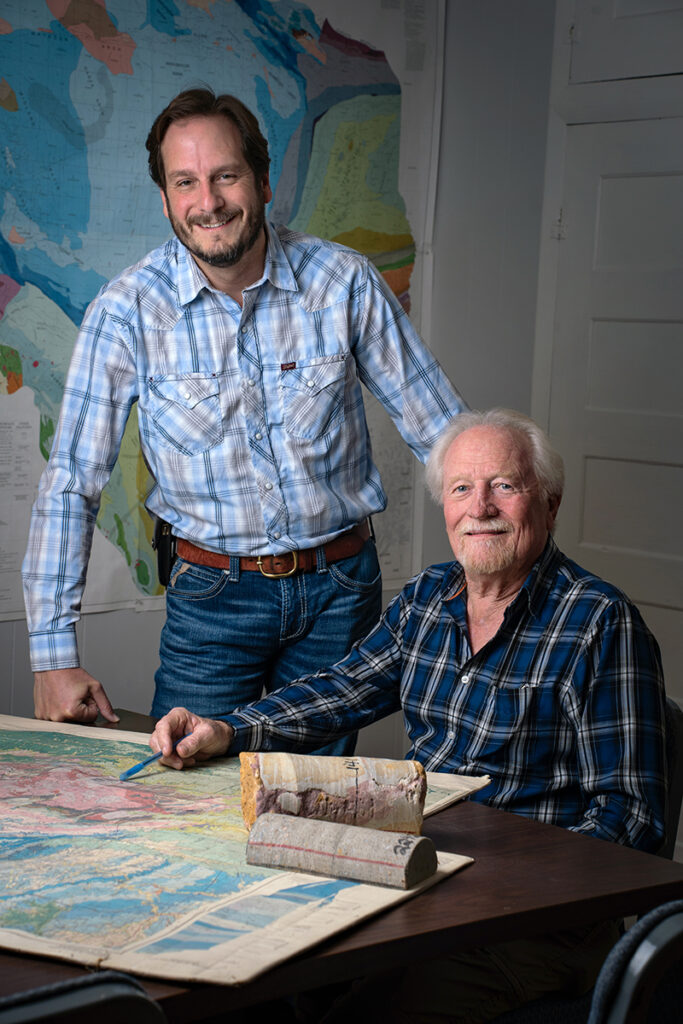
He has called the rivers of the Texas Hill Country home for more than 20 years. “The Hill Country is not Houston or even Bastrop. Things here are more arid, making water more finite and precious,” Babb says. He has now worked with Hill Country landowners and communities for decades to conserve this precious resource. To do so, he has focused on what’s beneath our feet.
Aquifers are inherently mysterious. They’re out of sight, tough to access, and further obscured by unfamiliar terminology. “Aquifers are highly complex systems. But fundamentally, we’re talking about rocks and dirt,” Babb says, avoiding geological jargon. We have multiple, interconnected aquifers in the Hill Country. Paul Babb has dedicated his life to shedding some of their mystery.
When Babb started college at Southwest Texas State University (now Texas State University) along the San Marcos River, little was known about the Trinity Aquifer. “I was shocked at how ignorant we were. At the time, there simply weren’t the economic incentives in place to understand these groundwater systems—not like oil and gas reserves.”
The Trinity Aquifer spans much of the Hill Country. It is an important source of water for rural communities, agriculture, and cities in Bandera, Blanco, Burnet, Gillespie, Hays, Kendall, and other counties. Yet, it has often been overshadowed by its southern neighbor, the Edwards Aquifer.
The Edwards is remarkably productive, providing most of the drinking water for the City of San Antonio. Vast networks of caves and sinkholes in this limestone formation (think Swiss cheese) provide conduits for rain to recharge this aquifer in a matter of days. The Edwards Aquifer feeds some of the largest springs in the state, including the Comal and San Marcos Springs.
The Trinity is less porous. It is Swiss cheese smothered with spicy brown mustard and relish: limestone caked with bits of clay, gravel, and sand. Instead of the extensive caves and sinkholes of the Edwards, the Trinity recharges comparatively slowly from smaller cracks, holes, and fractures in a matter of weeks and months, not days. It feeds smaller yet equally sublime springs such as Jacob’s Well, which forms the headwaters of Cypress Creek near Wimberley.
Both the Edwards and Trinity are considered the major aquifers of the Hill Country. Here, they also neighbor minor aquifers such as the Ellenburger–San Saba and Hickory.
Babb started college thinking he would graduate and work for the oil and gas industry. Instead, he found an internship studying wells drilled deep into the Trinity Aquifer. During school, Babb also got his first exposure to the agencies responsible for managing these elusive, underground systems: groundwater conservation districts. Texas grants these local conservation districts certain rights and authorities (e.g. setting well-spacing requirements), but not others (e.g. prohibiting the export of water) to manage local groundwater. It’s a big responsibility, one typically managed with limited staff, tools, and resources.
For several years during and after college, Babb worked for the University to help local districts expand their groundwater monitoring programs. Relying on phone telemetry, Babb and other researchers worked with volunteering landowners to install water-level sensors and other equipment at nine new sites. “Helping launch these programs was both sobering and gratifying,” Babb shared, as “this information would serve people long into the future to manage the Trinity.”
Studying the inner workings of an aquifer is complicated. “You can see as far below the ground as I can,” Babb laughs. “And a single water well is only 6-8 inches in diameter.” Unlike quantifying water in a river, “it takes inferences and even a bit of imagination” to extrapolate and understand these vast underground systems.
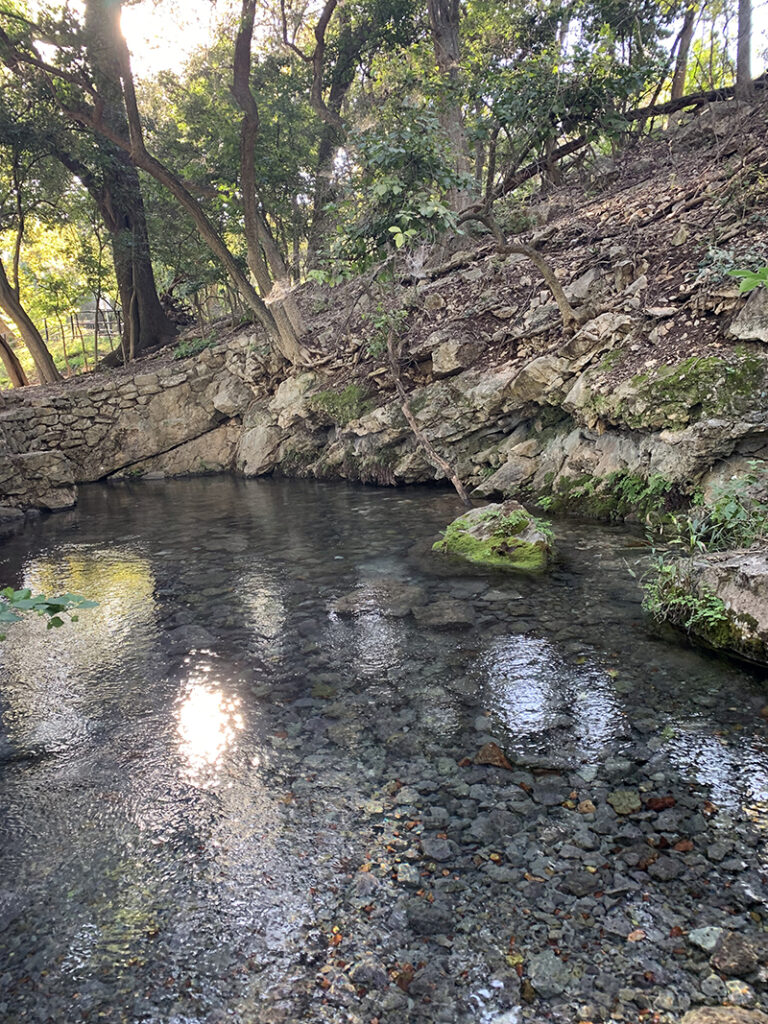
In addition to providing drinking water and irrigation, groundwater also contributes to the baseflows of our iconic Hill Country springs and rivers. “What’s baseflow? Well, it’s water you see flowing in a creek or river following a streak of beautiful, sunny days,” Babb says. “It’s basically the normal flow outside of a flood or large rain event, and it emerges from the ground.”
When explaining the connection between groundwater and rivers, Babb uses an example of a checking account. “If you understand the fundamentals of income and expenses, it’s the same principles. Our challenge is to balance the spreadsheet. If we want spring and creek flow, we need full, healthy aquifers,” to sustain these surface waters.
As Blanco County enters its fifth consecutive year of drought and faces mounting pressures from new development and growth, finding this balance has become increasingly difficult. The last two years, in fact, have been the driest on record. Over the summer, as aquifer levels dropped and the Blanco River dried up, the City of Blanco nearly ran out of its public water supplies. Outside the city limits, landowners in several parts of Blanco County have seen their water wells fail. These landowners have drilled new and deeper wells, a significant financial investment.
Babb is quick to bring conversation towards the finite nature of our spring-fed aquifers. “A lot of our Hill Country springs are now footnotes in a history book. They can’t be visited; they’re gone.” The causes? Climate and increased demand. And yet he remains optimistic. “We need to better define, understand, and work within the limits of these groundwater systems. Our decisions can’t just be based on fears or anecdotal evidence.”
Researchers and groundwater managers have learned a lot about the Hill Country aquifers—and their intricate connections to our rivers—since the 1990s. Staff at local groundwater conservation districts maintain more extensive monitoring wells to assess aquifer conditions. Meanwhile, others like the Meadows Center for Water & the Environment at Texas State University are mapping out how rivers and aquifers connect. Take, for example, the Pedernales River.
The Pedernales River emerges in Kimble County, first supported by springs tied to the Edwards Aquifer and then, downstream, by springs and seeps connected to the Trinity. To add yet another layer of complexity, the Meadows Center has found numerous instances where the Pedernales River “loses” water back to the aquifers through cracks and holes in the riverbed. These interconnected intricacies provide a myriad of options for a single raindrop.
Much remains to be learned about how aquifers communicate with one another underfoot and with less-studied creeks and rivers. Deploying new technologies and funding opportunities will help.
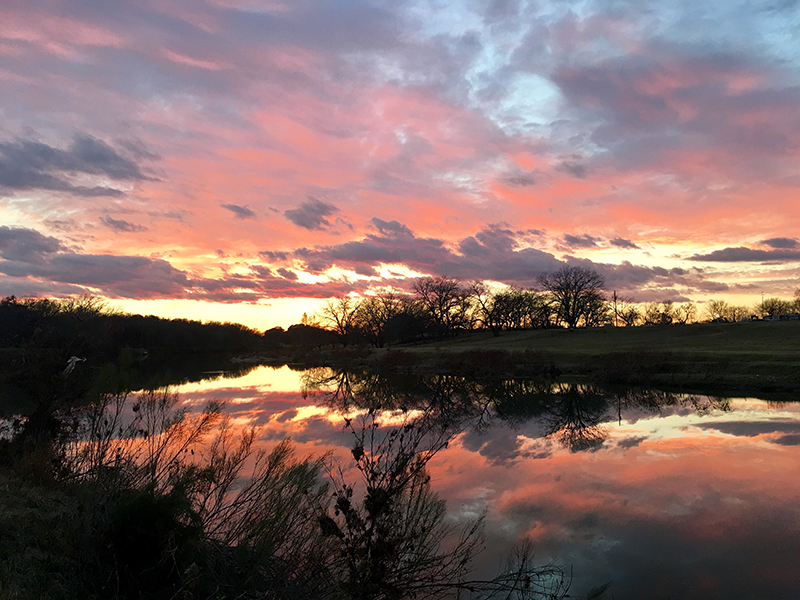
After his time at the university, Babb started a career working for groundwater conservation districts. He’s worked for the Central Texas Groundwater Conservation District in Burnet County and the Blanco-Pedernales Groundwater Conservation District in Blanco County. In March, he started a new role as general manager of the Hill Country Underground District in Gillespie County.
“Districts are local. If you care strongly about water, whatever your opinion, this is where you can make your voice heard,” at district meetings. Groundwater conservation districts also provide great resources to learn about aquifer systems and their local conditions.
While headlines often highlight discord between development and natural resources conservation, Babb sees vast opportunity. “Most people are reasonable. They do not want to diminish the value of their property; they enjoy seeing flowing rivers and love the natural resources of the Hill Country. We need to give them the tools to understand and make informed decisions about these finite groundwater resources.”
Providing these tools and understanding, for Babb, is always top of mind. So too is water conservation. He’s hopeful. Some cities and schools are starting to re-use water (e.g. treated effluent and AC condensation) for irrigation. Some cities and counties are investing in land conservation to protect aquifer recharge areas. More and more landowners are starting to invest in rainwater harvesting and planting drought-tolerant, native plants.
Babb feels strongly that with additional research and shared understanding of our aquifers, we can avoid having winners and losers. “Making sure we have enough groundwater is a shared responsibility and it can be done. It takes everyone participating.”
